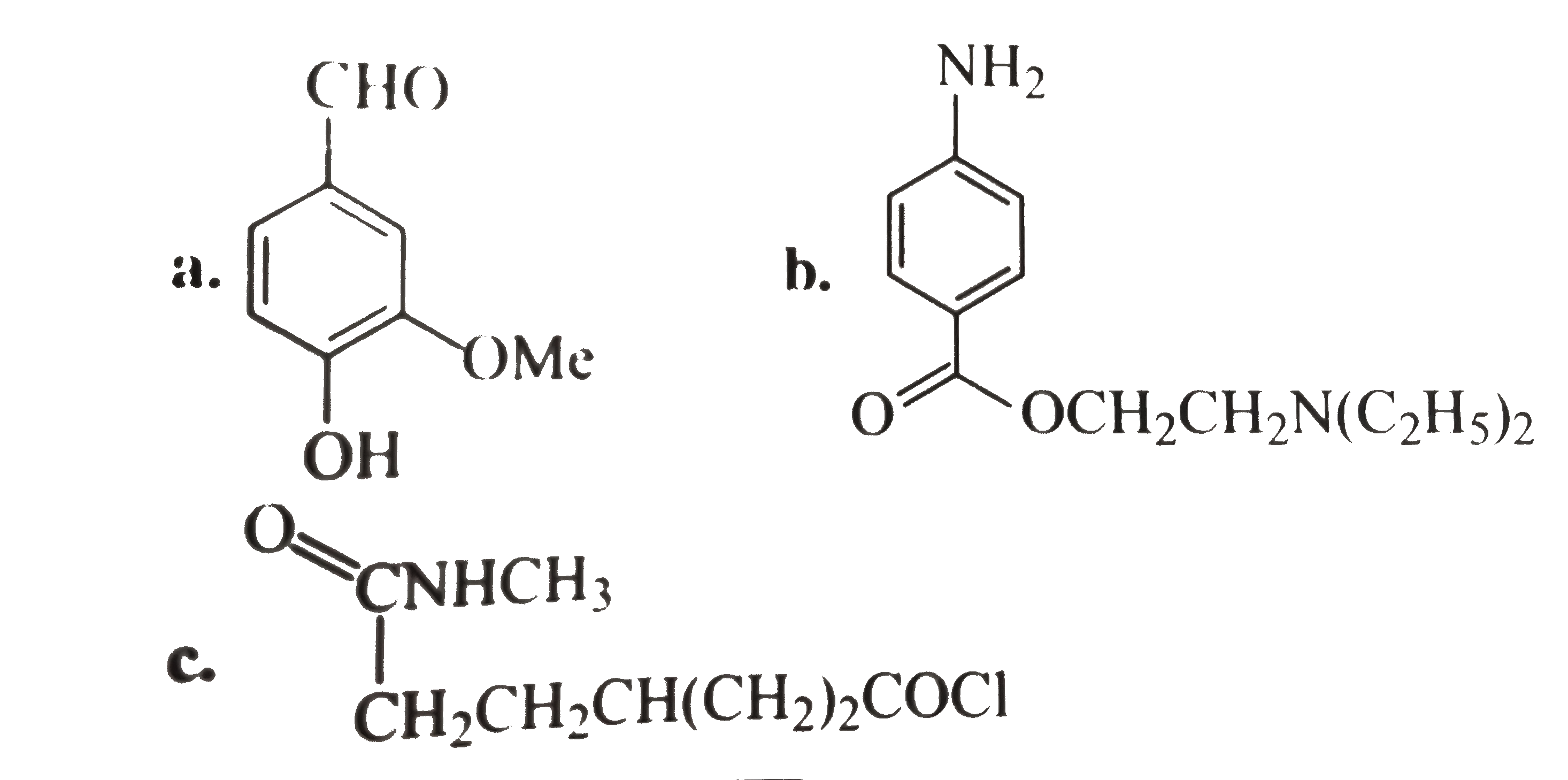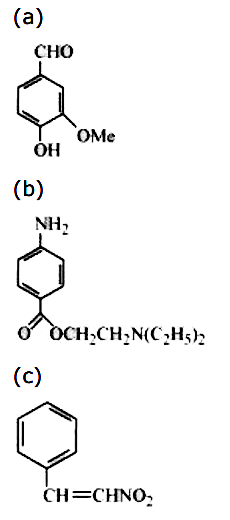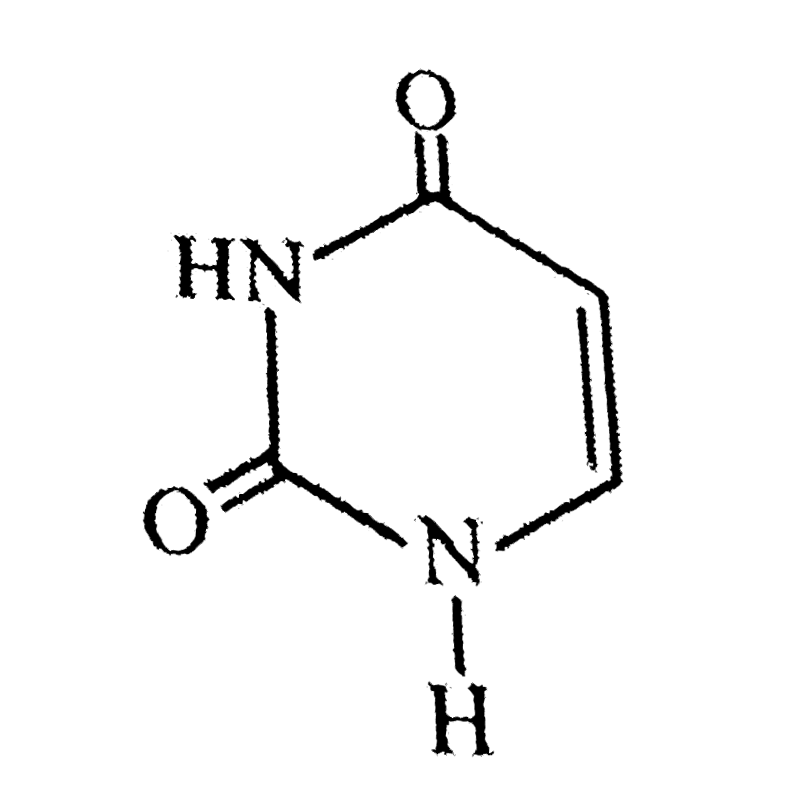Ozonolysis of an organic compound A produces acetone and propionaldehyde in equimolar mixture. Identify A from the following compounds.
2-methyl pent-l-ene
pent-1-ene
pent-2-ene
2-methyl pent-2-ene
The correct Answer is:D
To solve the problem of identifying the organic compound A that yields acetone and propionaldehyde upon ozonolysis, we can follow these steps:
Step 1: Understand the products of ozonolysis
Ozonolysis is a reaction where an alkene reacts with ozone (O₃) to form carbonyl compounds. In this case, we are given that the products are acetone and propionaldehyde.
Step 2: Write the structures of the products
- Acetone (CH₃COCH₃): This is a ketone with the structure:
O∣∣CH₃−C−CH₃
- Propionaldehyde (CH₃CH₂CHO): This is an aldehyde with the structure:
O∣∣CH₃−CH₂−C−H
Step 3: Determine the structure of compound A
Since ozonolysis involves breaking a double bond and forming carbonyl groups, we need to find a compound that, when ozonolyzed, would yield both acetone and propionaldehyde.
Let's denote compound A as an alkene with a double bond. The double bond in compound A must be positioned such that it can lead to the formation of both products.
Step 4: Construct the possible structure of compound A
To yield acetone and propionaldehyde, we can consider the following structure for compound A:
CH₃∣CH₃−C=CH−CH₂−CH₃
This structure has a double bond between the second and third carbon atoms.
Step 5: Verify the ozonolysis products
When ozonolysis occurs:
1. The double bond between the second and third carbons breaks.
2. Each carbon of the double bond forms a carbonyl group (C=O).
3. This leads to the formation of acetone (from the two methyl groups) and propionaldehyde (from the ethyl and aldehyde group).
Step 6: Determine the IUPAC name of compound A
The longest carbon chain in compound A has five carbons. The double bond is located between the second and third carbons, and there is a methyl group on the second carbon.
Thus, the IUPAC name of compound A is 2-methylpent-2-ene.
Step 7: Identify the correct option
From the options provided, we can see that 2-methylpent-2-ene corresponds to the fourth option.
Final Answer
The organic compound A is 2-methylpent-2-ene.
---
Ozonolysis is a reaction where an alkene reacts with ozone (O₃) to form carbonyl compounds. In this case, we are given that the products are acetone and propionaldehyde.
- Acetone (CH₃COCH₃): This is a ketone with the structure:
O∣∣CH₃−C−CH₃
- Propionaldehyde (CH₃CH₂CHO): This is an aldehyde with the structure:
O∣∣CH₃−CH₂−C−H
Since ozonolysis involves breaking a double bond and forming carbonyl groups, we need to find a compound that, when ozonolyzed, would yield both acetone and propionaldehyde.
To yield acetone and propionaldehyde, we can consider the following structure for compound A:
CH₃∣CH₃−C=CH−CH₂−CH₃
This structure has a double bond between the second and third carbon atoms.
When ozonolysis occurs:
1. The double bond between the second and third carbons breaks.
2. Each carbon of the double bond forms a carbonyl group (C=O).
3. This leads to the formation of acetone (from the two methyl groups) and propionaldehyde (from the ethyl and aldehyde group).
The longest carbon chain in compound A has five carbons. The double bond is located between the second and third carbons, and there is a methyl group on the second carbon.
From the options provided, we can see that 2-methylpent-2-ene corresponds to the fourth option.
The organic compound A is 2-methylpent-2-ene.
Topper's Solved these Questions
- HYDROCARBONS BOOK - ICSECHAPTER - HYDROCARBONS EXERCISE - TRUE OR FALSE TYPE QUESTIONS
35 Videos
- HYDROCARBONS BOOK - ICSECHAPTER - HYDROCARBONS EXERCISE - FILL IN THE BLANKS TYPE QUESTIONS
22 Videos
- HYDROCARBONS BOOK - ICSECHAPTER - HYDROCARBONS EXERCISE - ESSAY (LONG ANSWER) TYPE QUESTIONS
28 Videos
- EQUILIBRIUM BOOK - ICSECHAPTER - EQUILIBRIUM EXERCISE - NCERT TEXT-BOOK EXERCISE
109 Videos
- HYDROGENBOOK - ICSECHAPTER - HYDROGENEXERCISE - NCERT TEXT-BOOK EXERCISE (With Hints and Solutions)
53 Videos
Similar Questions
Knowledge Check
Ozonolysis of the following compound will produce ,
 is : ACH3−O||C−O||C−H,H−O||C−O||C−HBCH3−O||C−O||C−CH3,H−O||C−O||C−HCCH3−O||C−O||C−CH3,CH3−O||C−O||C−HDCH3−O||C−H,H−O||C−O||C−H
is : ACH3−O||C−O||C−H,H−O||C−O||C−HBCH3−O||C−O||C−CH3,H−O||C−O||C−HCCH3−O||C−O||C−CH3,CH3−O||C−O||C−HDCH3−O||C−H,H−O||C−O||C−H
Identify the functional groups in the following compounds.

View SolutionIdentify the functional groups in the following compounds

View SolutionIdentify the functional groups in the following compounds

View SolutionIdentify the functional groups is the following compounds:

View SolutionIdentify the functional groups is the following compounds:

View SolutionIdentify the functional groups is the following compounds:

View Solution
Identify compound A
View Solution

